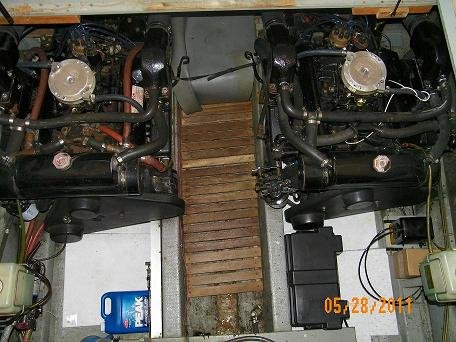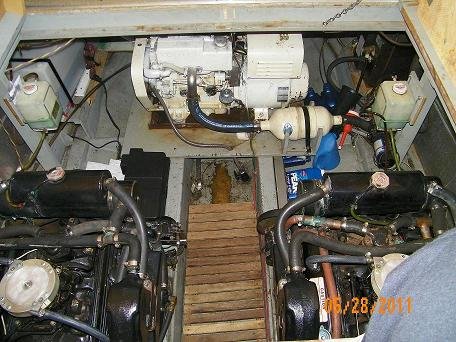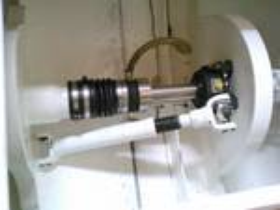May have to reconsider a flex coupling of some sort. There is some room to move the shaft aft but don't want to overdo it - as in leaving the prop hanging out to far past the strut...
The link I provided is one way of reducing vibrations
But cross off prop balance and cutlass bearings first
My old boat has the Cat diesels bolted directly to the engine stringers and also has hard rubber disc bolted between the engine and the prop shaft flange.
Is your hard rubber disk similar to the coupling in my link?
To be clear, the flexible coupling cited by Stray-Cat will address minor alignment deficiencies and thereby reduce vibration.
A system like the one produced by Aqua Drive and mentioned by many Many Boats
Aquadrive
provides a flexible coupling
and also handles the prop thrust. This probably helps the transmission and allows for special (softer) engine mounts, further reducing vibration.
Right?
Correct , the Aqua-drive is a top quality product
BTW the poly disk
will handle prop thrust
Stray-Cat,
The R&D flex coupling is very good for engines that are on relatively firm mounts. Of course it is only about 1/15th as much money and trouble but there is the potential danger of doing serious transmission damage. That occurs only if the bolt heads come in contact w the transmission output flange. Then the shaft will hammer the thrust bearing and do serious damage. I once had to replace a transmission because of that. One needs to make sure they have the right size mount so it can take the thrust without pushing the bolt heads up to the transmission flange. Periodic checks should be made as the plastic may weaken over time. I like these couplings and would use one again but I'd be very careful to insure the bolts didn't touch. I'd probably get the next size up. Wouldn't be quite as flexible but safer.
Miss Rachel,
Right.
I agree,correct installation is critical,the coupling that I have seen in use has been in the boat over 10 years
It's not to be used as a shortcut for poor misalignment
The owner had a pro do the install
I can't believe the one person here who has one hasn't posted a photo of his U-joint drive ... or commented on its performance.
The Selene I ran had a Aqua-drive + engine mount isolation system
It was installed by the previous owner
No issues with vibration,and no issues with maintenance in the 4 years since original install
The engine was a Cummings qsm-11 rated at aprox 450hp
The cost of the Aqua-drive was $10k + installation
The motor vibration system ,which was a costly large stainless steel mounting and spring system brought the total cost to approx $40k including installation
I did not post a comment on this previously as most of the folks here have better uses for that kind of money






